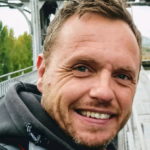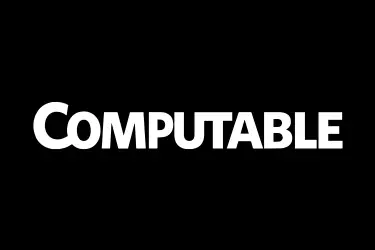Algemene informatie over Mount Kilimanjaro
Kilimanjaro with its three volcanic cones, Kibo, Mawensi, and Shira, is an inactive stratovolcano in north-eastern Tanzania. Although it does not have the highest elevation, Kilimanjaro is the tallest free-standing mountain rise in the world, rising 4,600 m (15,100 ft) from its base, and includes the highest peak in Africa at 5,895 metres (19,340 ft), providing a dramatic view from the surrounding plains.
Geography
Kilimanjaro is 340 km south of the Equator, 280 km from the Indian Ocean and just over 400 km from Lake Victoria. It lies on the eastern side of the eastern branch of the Great Rift Valley, and north-north east of the Maasai steppe, the great plain of north-eastern Tanzania renowned as the homeland of the nomadic Maasai cattle-herders.
Principal human habitation lies on the southern and eastern slopes of Kilimanjaro, where the fertile and well-watered soil supports farming, especially of horticultural crops by the Chaga people. The city of Moshi, just over 30 km from the summit, is the main urban centre and has paved highway and rail connections to the Tanzanian coast at Tanga and Dar es Salaam. The area's tourist industry is served by Kilimanjaro International Airport.
The grasslands exploited by the Maasai extend west and north of Kilimanjaro into Kenya as far as Nairobi, 200 km north-north-west. The Kenyan border runs along the lower slopes of the mountain on the north-eastern and eastern sides, only 20 km from the summit. Amboseli National Park in Kenya reaches to the lower slopes on the northern side, while the hot dry savanna plains of Tsavo National Park, also in Kenya, are farther east.
These extensive plains surrounding the mountain have an elevation of 1100–1400 m except in Tsavo, which is lower at 800 m. The only other nearby highlands are a chain of hills running south-east to the coast where they are called the Usambara Mountains, and 50 km to the west-south-west is another isolated volcanic mountain, Mt Meru, above the city of Arusha.
Kilimanjaro's middle and lower slopes catch more rain than the surrounding plains. The southern slopes are the wettest, feeding the Pangani River which has formed a valley flowing south-south-west, parallel to the Usambara Mountains. To the east streams feed the Galana River. The northern slopes drain into the seasonal Lake Amboseli and Kiboko River. Streams on the south-western side join the Pangani.
Kilimanjaro's prominence above the surrounding plains and frequent clear skies enable Kilimanjaro to be seen from the south, west and north from as much as 200 km away – it can often be seen from Nairobi. Although no hills block the view of the mountain from the east, the humid Indian Ocean coast is usually cloudy and hazy. Coastal towns such as Mombasa and Malindi, 280 and 300 km away, are too far and too cloudy for Kilimanjaro to be seen from there, and although Arabs and Europeans have visited these towns for centuries, the mountain was not known to them until the 19th century.
Volcanic status
While it is inactive, Kilimanjaro has fumaroles that emit gas in the crater on the main summit of Kibo. Scientists concluded in 2003 that molten magma is just 400 metres (1,300 ft) below the summit crater. Although new activity is not expected, there are fears the volcano may collapse, causing a major eruption similar to the 1980 eruption of Mount St. Helens. Several collapses and landslides have occurred on Kibo in the past, one creating the area known as the western breach. Although there is no recorded history of eruptions, local legend speaks of activity around 170 years ago.
Current conditions
While the volcano appears to be dormant on the inside, events on top of the mountain draw global attention. The top of the mountain has seen a retreat of the most recent covering of glaciers, with the most recent ice cap volume dropping by more than 80%.
In 2002, a study led by Ohio State University ice core paleoclimatologistLonnie Thompson predicted that ice on top of Africa's tallest peak would be gone between 2015 and 2020. In 2007, a team of Austrian scientists from University of Innsbruck predicted that the plateau ice cap will be gone by 2040, but some ice on the slope will remain longer due to local weather conditions. A comparison of ice core records suggests conditions today are returning to those of 11,000 years ago. A recent study by Philip Mote of the University of Washington in the United States and Georg Kaser of the University of Innsbruck in Austria indicates that the shrinking of Kilimanjaro's ice cap is not due to global warming but instead driven by solar radiation. [6]As of January 2006, the Western Breach route has been closed by the Tanzanian government following a rockslide which killed four people at Arrow Glacier Camp. The rockslide is believed to have been caused by frost action in an area which is no longer permanently frozen.
After the Western Breach route was closed in January 2006, many expeditions that had intended to use this route have instead used the Lemosho/Barafu route. As the Western Breach route, this route starts to the west and goes up the Shira Ridge towards Lava Tower. Instead of going up to Arrow Glacier camp and the breach, however, this route goes around the southern edge of Kili towards Barafu Camp. From Barafu Camp, around 15,200 ft (4,630 m) altitude, a nighttime summit is usually attempted.




